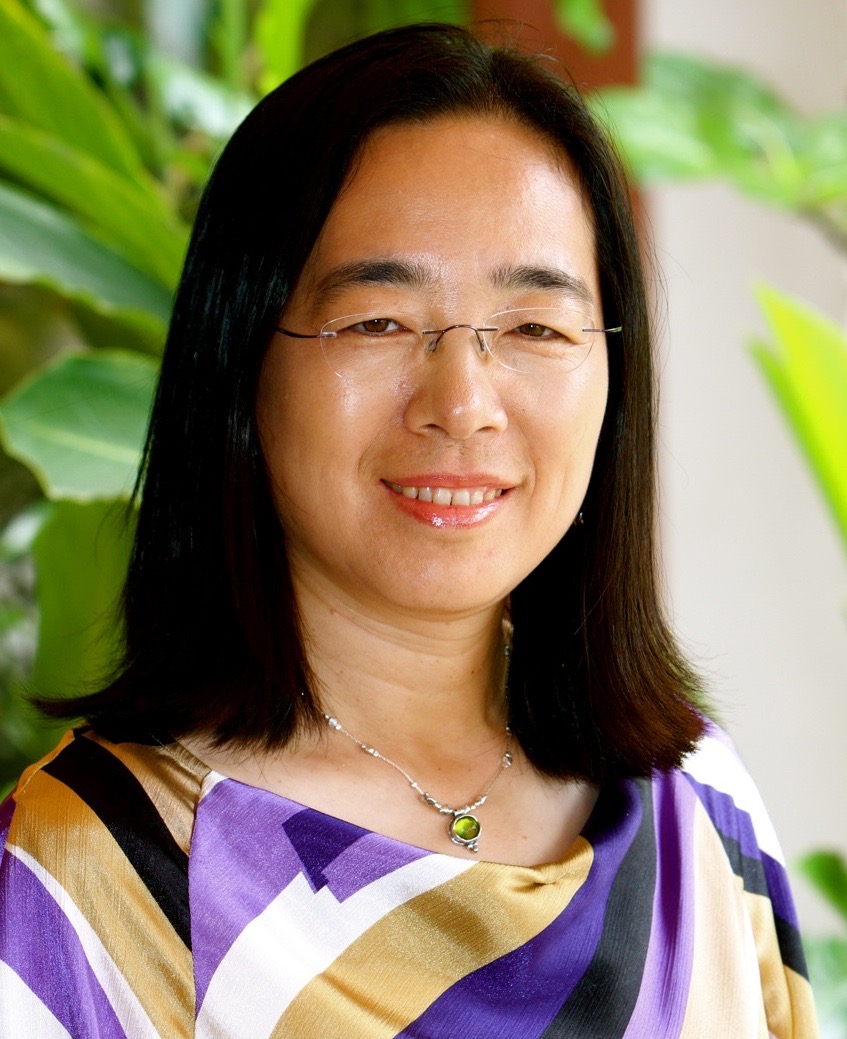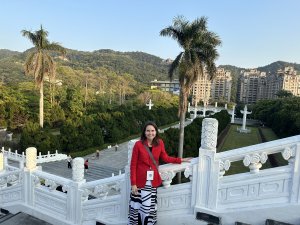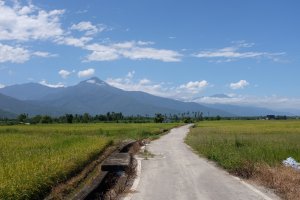It took me more than a year plus three weeks to start my Fulbright program in Taiwan, so I was determined to utilize all the opportunities during my stay there. The pandemic delayed my travel by over a year, and of course I had to go through three weeks of quarantine in Taiwan. My teaching and research are related to tea and culture, and Taiwan turns out to be a tea paradise!
While I have studied tea and culture in China’s Tang through Ming dynasties, I came to Taiwan with no experience in tea making, and only rough ideas about Taiwan’s tea tree species, the variety of teas, and the art of tea. Now having completed my program in Taiwan, I feel so enriched in my knowledge and experience of tea. I followed tea masters to make teas three times, which means, in addition to learning about the process of tea making, I stayed up till 4 or 5 am to follow critical tea-processing steps. I have learned so much about varieties of tea plants, kinds of teas, and the art of tea in Taiwan.
My trips to Alishan initiated my wandering in the land of tea, learning about and researching tea. My research focuses on factors affecting Alishan high-mountain (gaoshan) tea making, i.e., the transforming of the green tea leaves into a cultural taste—taste both literally and figuratively. Soon after my quarantine release in October, I had the great fortune of meeting with Mr. Li Chan-Feng, an expert tea maker and teacher. He offered me a surprise invite to come to the Alishan to make Oolong tea with him.
Oolong tea follows partial oxidization, a process that is very delicate. The withering process is particularly important and demanding, taking about 14-15 hours and keeping the tea-making team up through the night. Mr. Li was very particular about the oxidization process, making sure it is enough to allow the transformation of raw chemicals into a nice floral and fruity smell and taste. He lamented the reduced oxidization level in recent years that results in teas having a grassy taste that some call “mountain taste,” irritating to the stomach. The withering process requires all senses to be intensely engaged: sight, hearing, touch, smell, and taste—a complete lesson and experience in environmental phenomenology.
I made another, longer visit to Alishan in early November toward the end of the winter tea-making season. My collaborators at my host institution National Taiwan University (NTU) could not make the trip at the time, so not wanting to miss the season, I decided to go by myself. I had one contact, Uncle Niu, whom I met on a brief trip to Alishan in 2019. I wished to speak to tea makers about the taste of gaoshan tea. I had no specific plans, no means of transportation, and not even knowing where I would stay. Yet everything worked out more amazingly than I could had expected!
I stayed with a tea processing family at their B&B at the introduction of Uncle Niu. My host there, Yun’an, really took care of me. I went with her everywhere, as she picked tea and I interviewed tea processers. Unexpectedly, when I had the wish to interview the village head in Taihe, the tea field that I walked to happened to belong to the village head! Going to places with Yun’an also provided me opportunities to observe and understand different aspects of life in the tea-producing Alishan. As I learned about factors affecting the flavor of teas, I realized an important link I had not thought about: whole-buyers and retail customers of tea. This was when I learned that a whole-buyer would come for a visit and some weekend travelers would come to buy tea. I observed their interactions with Yun’an and her husband Mr. Luo, and learned much from the experience.
Of course, Alishan is so beautiful, and the mountains in front of the tea factory where I stayed were changing constantly with shifting clouds and lighting, calling for tons of photos. The most striking was watching the rolling sea of clouds right on the front steps of the B&B, and watching the whole sky, including tea leaves, turning rosy red at sunset—a magical moment after stepping out of the home of an expert tea maker.
The extended stay at NTU offered by the Fulbright program allowed me to build research collaborations, especially with the research team of Prof. Po-Yi Hung, a tea scholar at NTU’s geography department. I also connected with two professors of Daoism in NTU’s philosophy department, learning Zhuangzi from them and contemplating the application of Zhuangzi’s writing on skills to tea making. I think of my trip to Alishan as a “Zhuangzian wandering” in the land of tea.
Additionally, I made connections with and gave talks at National Chengchi University at the introduction of Prof. Daya Kuan, and at Da-Yeh University. Da-Yeh University is unique in having established a Master’s program on tea in recent years, and I was fortunate to meet with Dean Lee Shih-Chieh at the bio-tech college, a tea researcher and also President of Taiwan Tea Association. Dean Lee offered me the great opportunity of learning about tea processing in their fall program, through which I met with more tea practitioners. The selfless care Dean Lee and other professors offered to students was simply unforgettable.
Taiwan could well be the best place to live in the world. Taipei runs so smoothly—so did my life in Taiwan. Taipei has close to three million people, small in comparison to some large cities in the world; yet it has all the best Chinese as well as other foods to offer. The Taipei metro is a pleasure to ride on, something unthinkable after experiencing the subway systems in different US and European cities. Imagine getting off the Green line to switch to the Red line at Zhongzheng Memorial, only to find that the Red Line train is just arriving from the opposite side of the platform some steps away. Apparently, this happens often with different metro switches.
I often received help at just the right moment. When I waited for the Haoxing Bus at Shizhuo in Alishan to go to Yuanlin, I thought I had to ride to Chiayi to take the High-Speed Rail and then switch to Taiwan railway to Yuanlin, which would mean having to wait another hour for the bus. A woman then came to the bus station, and upon hearing where I was headed, told me an earlier bus would take me directly to the Railway station! This saved so much time and hassle for me. I was so pleased.
Then, before I left Taiwan, I connected with Professor Fan Zengping, a renowned author and teacher of Taiwanese tea art. He kindly offered me books and magazines on Taiwanese tea, weighing 30 pounds—how generous of him! Taking the heavy luggage of books to ride back from Taoyuan to Taipei on a bus, I wished for an easy connection with the metro. It so happened that the woman sitting next to me chose that particular bus to connect with the metro station via easy access, i.e., by escalators instead of long flights of stairs—just what I was looking for!
What would I tell people back in Hawaii about Taiwan? It’s a wonderful place, with kind people, excellent food, and easy living. I have made so many meaningful connections there—many turning into friendships—especially in the communities of tea, with both academics and practitioners. I have also found gaps in my knowledge of tea culture in Taiwan, which I will pursue in the future. I will return to Taiwan again, as I told my many new LINE contacts and friends in Taiwan. Who knows, maybe later this year!
Managing Editor: Li-Hsin Ning 甯俐馨





